For corporate travel, a long recovery ahead
When the COVID-19 pandemic halted travel around the globe, business travelers had to pivot quickly from in-person meetings and events to virtual platforms. As the pandemic continues and travel-industry players look ahead for a rebound, our research shows that the postcrisis return will take years and that business travel will return at a slower pace than leisure travel.
In this article, we examine the role of corporate travel, and how the industry has recovered after previous disruptions; the segments that may return first, and how and why they will differ; and the segments that may be permanently replaced by technology. We also explore travel patterns and event recovery in China, the first major market to resume travel, and see how other major markets on varying timelines of pandemic recovery are faring. Finally, we highlight key actions that could help travel players in an undoubtedly lengthy recovery ahead. In future articles, we will take a deeper look at the timeline and shape of the recovery curve for corporate travel.

Business travel is critical—and volatile
In 2018, business-travel spending exceeded $1.4 trillion—21.4 percent of the global travel and hospitality sector. 1 Global economic impact & trends 2020 , World Travel & Tourism Council, June 2020, wttc.org. More than half of business travel is concentrated in two economies, China and the United States. Business travel encompasses transient travel and travel for meetings, incentives, conferences, and events (MICE), from large-group offsite gatherings to industry-wide exhibitions.
Corporate travel is significant for airlines and hotels not only in traffic but in profitability. While some travel providers have limited exposure to business travel (ultra-low-cost carriers, for example), it’s a critical driver of profitability for many major carriers. Because corporate travelers are more willing to purchase higher class or refundable fares, they can drive between 55 and 75 percent of profit for top airlines but account for as few as 10 percent of passengers. 2 Jane L. Levere, “Best guess on when business travel will recover? It could be years,” New York Times , July 13, 2020, nytimes.com. Similarly, some convention-focused hotels (some hotels in Manhattan, for example), depend nearly entirely on corporate travelers for their occupancy, while other resorts in vacation destinations are likely to be unaffected by reduced corporate demand.
Historically, business travel has been more volatile and slower to recover than leisure travel after economic downturns and other disruptions to travel patterns (Exhibit 1). During the 2008–09 global recession, international business travel from the United States declined more than 13 percent, compared with a decline of just 7 percent for international leisure travel from the United States. And although international leisure travel fully recovered in just two years, international business travel didn’t fully rebound to prerecession levels for five years.
Given the volatility of business-travel patterns on top of significant modern technological and connectivity advancements, the economic disruption from the COVID-19 pandemic will have critical implications for the rebound of business travel—and indicates a long road ahead for the sector.
Business travel will eventually return—but in phases
When economies around the world shut down because of the COVID-19 pandemic, most large corporations instituted sweeping restrictions on travel and set high thresholds for exceptions. By April 2020, US airline capacity declined about 70 percent from that in 2019 , a decline nearly four times greater than seen after the September 11, 2001, attacks and six times greater than seen after the 2008–09 financial crisis.
Once companies and their employees are prepared to return to the use of airports and hotels, our research indicates that they will do so in phases. 3 Our team interviewed global travel managers in around a dozen companies, all large business-travel buyers, between June 23, 2020, and July 14, 2020. Global travel managers and directors told us that they are closely monitoring local indicators of public health and government regulations, vendors’ health and safety policies, and employees’ willingness to travel. All three areas can help inform decisions on easing travel-policy restrictions. Several interviewees indicated a need to institute one to three months of buffer time on top of any government guidance to ensure safety.
Travel planners also identified the segments of business travel that are likely to return first, as determined by the length and purpose of a trip and the sector in which travelers work (Exhibit 2). Importantly, even those travel segments likely to return first are on a slow, long timeline for recovery, subject to geographical considerations (such as stabilization of COVID-19 outbreaks and governments’ readiness to open up travel).
Regional and domestic business travel will return first
Looking first at the distance of business travel, regional and domestic trips will likely see a return before international travel does. According to a Global Business Travel Association survey of its member organizations, companies are twice as likely to have halted international travel as have halted domestic travel as of July 2020. 4 “2020 coronavirus poll: July 16, 2020,” Global Business Travel Association, July 2020, gbta.org. Within domestic travel, trips that can happen in personal or rental vehicles may replace short regional flights until companies’ comfort with sending employees via airplanes increases.
Travel managers with operations in Asia–Pacific say they have begun to see a slight uptick in domestic travel in countries where outbreaks have stabilized (for example, one organization we interviewed noted that domestic China travel was at 70 to 80 percent of prepandemic levels as of June) but that it’s nowhere near a full return to scale in any region.
International travel will take longer to rebound because of the complexity of government regulations, mandatory quarantines, and the high risk of fast-changing policies. In Asia, to help facilitate economic development, some governments (such as Malaysia and Singapore) are exploring the creation of business-travel corridors under strict protocols that allow exceptions to quarantine measures.
Business travel for in-person sales and client meetings will return first
Examining next the purpose for travel, other than for mission-critical use cases (such as supply-chain-related travel that have continued throughout the pandemic), travel for sales and client-related meetings is most likely to be among the first to return as domestic travel resumes and more travel is permitted, according to those we interviewed.
Sales-focused organizations expressed an urgency to return to face-to-face meetings, with the understanding that doing so will require both parties to be comfortable with the travel required. Whether client offices will reopen to workers and allow guests will be a major indicator of the likelihood of that type of travel returning. Other interviewees expressed a need to keep up with their competitors: once peers begin traveling for sales meetings or pitches, companies will face increased pressure to return to travel to win business among key customers.
The timeline for travel for internal in-person meetings to resume is longer, with higher levels of scrutiny on what is considered business critical and can’t be accommodated with technology. Travel to interact with physical assets—data centers and IT infrastructure—will take priority. But economic constraints across industries, especially those hit hardest by the pandemic’s economic disruption, will decimate internal travel as budgets get disproportionately cut. Travel for internal MICE and other off-site gatherings may not return until well into 2021 or later. And some travel for internal purposes will be permanently replaced by virtual meetings and collaboration.
Business travel for major industry events will most likely be the last to return, as it requires a higher degree of confidence in public safety. Although conferences and trade shows are critical networking opportunities and difficult to conduct virtually, they are also high-risk, given the number of attendees, which can range from several hundred to more than 100,000. When surveyed about what measures will most boost confidence in business-travel bookings for major MICE, US travel planners ranked the availability of a COVID-19 vaccine highest, above stable-public-health indicators and lifted government restrictions (Exhibit 3).
Once events do resume, they will look different. Sales-oriented conferences and trade-show exhibitions may be the first to return to in-person formats. But many events will offer virtual, hybrid, or multilocal models with abbreviated in-person schedules, and they will move from destination cities to regional industry hubs. Venues will need to be modified to allow physical distancing.
In China and South Korea, major domestic automotive and construction trade shows hosted more than 40,000 attendees as early as the end of April 2020, when positive COVID-19 cases were fewer than 50 per day in each country. The Hunan Auto Show, which opened April 30, drew a crowd of around 60,000 attendees and instituted health and safety requirements, including temperature checks, mandatory wearing of masks and gloves, and physical distancing throughout the event.
The hardest-hit sectors will be the last to resume corporate travel
Sector, too, will play a significant role in determining the trajectory of business-travel return. Industries use business travel for different purposes, and their ability to replace it effectively with technology varies. Additionally, while all industries were affected by the COVID-19 crisis, some sectors (such as energy and retail) were hit harder than others and may face more budget constraints, which could slow their pace of travel recovery.
Industrial and production-oriented sectors (such as construction, real estate, machinery and equipment makers, and pharmaceuticals) may lead in the return to business travel. Comparing business-travel dynamics by industry in China prior to the COVID-19 pandemic and during the early travel rebound shows that those sectors rebounded sooner than the rest of the market did (Exhibit 4). Meanwhile, service and knowledge sectors (such as science and technology research) in China lagged behind in returning to business travel but indicated more ability to replace travel with technology.
If China’s still-nascent recovery is indicative of how sectors will return to travel, then other regions will probably see a slower return, based on their industrial mix. Europe and the United States have a higher proportion of business-travel spend concentrated in professional and service sectors and less in the industrial sectors that are showing early resilience in China (Exhibit 5).
How travel providers can prepare
Business travel has a long, multiyear recovery ahead. Travel players that depend on it need to act now and act quickly to weather the storm. Since the global outlook on travel is changing at an unprecedented pace, the critical first step is to develop a deep understanding of when different segments will return. To inform decision making, industry players will need a painstakingly granular, data-backed, flexible perspective on how travel will return across key customers and use cases.
To achieve that perspective, industry leaders should connect directly with their top customers’ relevant decision makers rather than engage through the procurement channels in which they may have stronger relationships today. Decision makers hold critical information that can feed assumptions on the timeline for travel recovery and offer deeper insights on customers’ future needs.
Business-travel players must evaluate the economics and pivot where needed. Airlines, for example, may choose to shift their business-class pricing and marketing to appeal to high-end leisure customers. Hotel operators may choose not to operate all their facilities or amenities or perhaps keep entire properties closed until demand returns. Trade associations and event planners, too, must pivot, bracing for a slow return to travel for in-person events or investing in technology to create high-quality virtual experiences to generate revenue. Alternatively, players may realize that they need to seek new revenue streams to survive. For instance, hospitality companies may choose to repurpose event and meeting spaces as shared-workspace options for companies that have reduced capacity at their own office sites.
As the business-travel sector does recover, its providers must modify operations and policies to accommodate new customer needs. They should overinvest to ensure 100 percent compliance with health and safety measures and seek global accreditations. Proper execution will make or break customer confidence at a time when traveler reluctance is high. Hotels and airlines must innovate the customer experience specifically for the business traveler. Airlines should evaluate loyalty-program benefits (for example, future business travelers might prefer upgrades to empty rows over upgrades to premium seats). Hotels can reevaluate amenity offerings by partnering with digital players in the food-service and fitness spaces.
Last, business-travel players should shift their commercial models to accommodate disruption. With limited resources and a slow recovery, travel companies must ensure lean, efficient models in the near term without sacrificing long-term capabilities. They must identify opportunities for cross-industry collaboration to minimize losses through resource sharing, when permitted by regulators. MICE sales cycles, in particular, are long—from six to 18 months or longer. Hotel chains and event spaces will need to maintain frontline sellers to stimulate long-term demand but may need to centralize or share resources across properties and adjust incentives and targets. Many industry players have announced deep organizational restructuring, which may prompt a resegmentation or reallocation of resources against changing priorities.
The COVID-19 pandemic has presented an unprecedented challenge to the entire business-travel sector. Companies that are agile and keep a pulse on customer needs will emerge as leaders in the postcrisis recovery.
Andrew Curley is a partner in McKinsey’s Chicago office, Rachel Garber is an alumna of the Houston office, Vik Krishnan is a partner in the San Francisco office, and Jillian Tellez is an associate partner in the Atlanta office.
The authors wish to thank Prashanth Kuchibhotla, Esteban Ramirez, Steve Saxon, and Peimin Suo for their contributions to this article.
This article was edited by Justine Jablonska, an editor in the New York office.
Explore a career with us
Related articles.

Hospitality and COVID-19: How long until ‘no vacancy’ for US hotels?
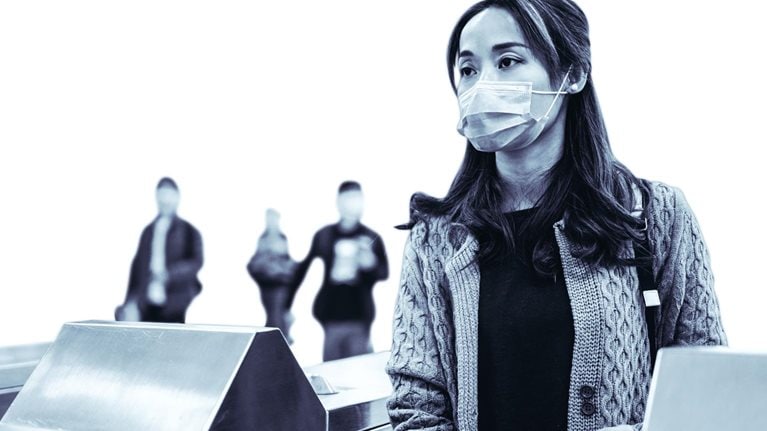
The way back: What the world can learn from China’s travel restart after COVID-19

Make it better, not just safer: The opportunity to reinvent travel
Business Travel News
Stay ahead with Business Travel News from Skift. Get the latest corporate travel updates, essential for navigating this vital sector. Our coverage offers insights into travel policies, risk management, and procurement strategies for informed decision-making.
Find articles on travel buyer tactics, negotiation strategies, and supplier relations to optimize travel programs. Stay updated on booking channels, global distribution systems (GDS), and direct connections.
Safety is key; our duty of care content focuses on traveler safety, risk management, and compliance with evolving regulations. Discover how companies use loyalty programs to enhance traveler satisfaction and build long-term supplier relationships.
Explore the business travel industry with Skift’s experts. Read comprehensive reports, insider news, and expert analyses to understand the future of corporate travel.
Check the latest articles from Skift and stay informed with the most relevant business traveler news.
Cathay Pacific Signs Big Plane Order as it Scrambles to Regain Dominance
Cathay Pacific was hit harder than most during the pandemic, and remains a relative laggard on the international stage. Bosses see 2024 as the year that its rebuilding plan really starts to gathers pace.
Gordon Smith | 5 days ago
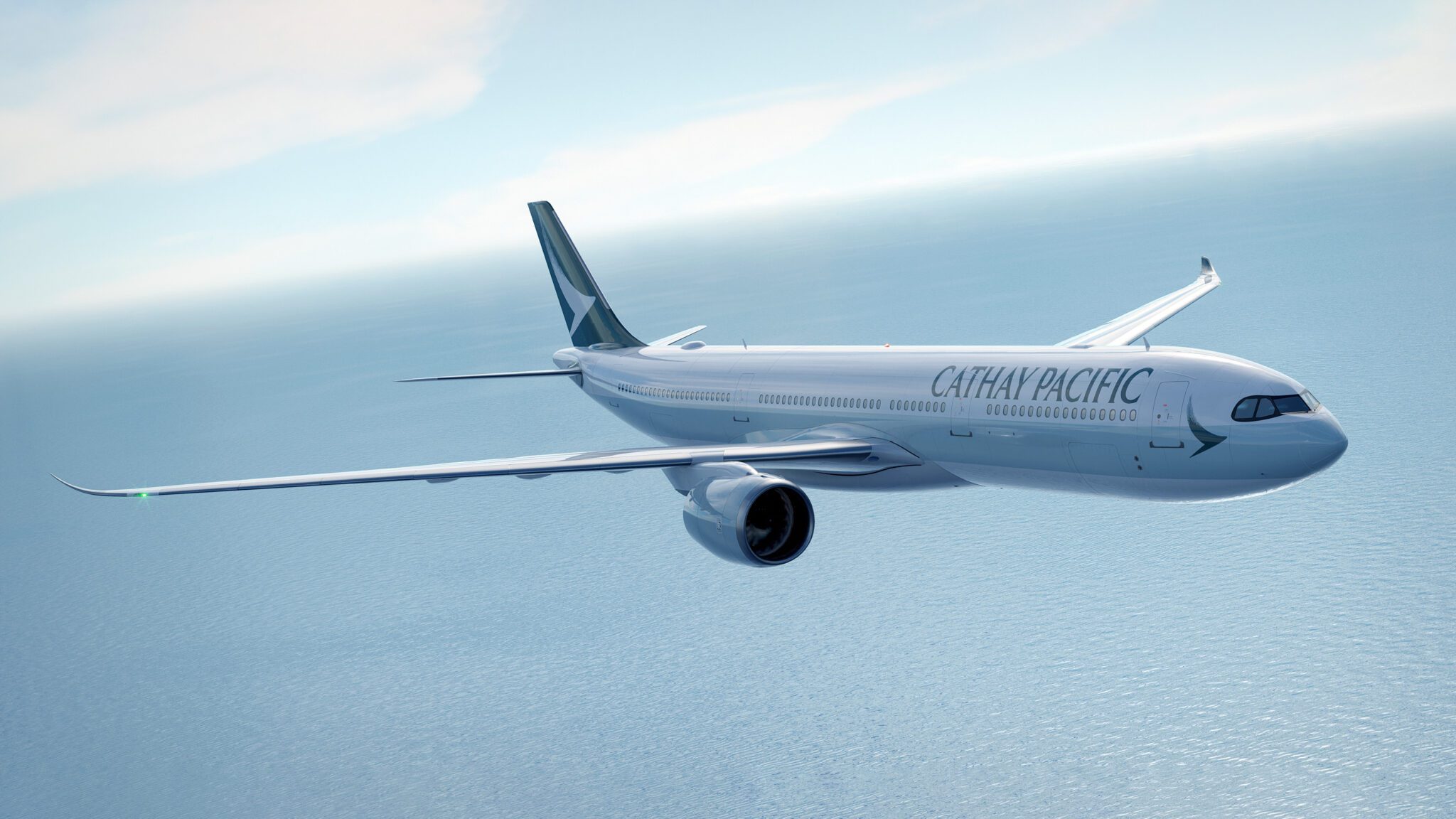
Spirit Announces Huge Premium Push, But is it Enough to Shore Up the Airline?
Spirit is the latest U.S. low-cost airline to make a premium pivot in a bid to boost profitability. Wall Street will be watching closely.
Gordon Smith | 2 weeks ago
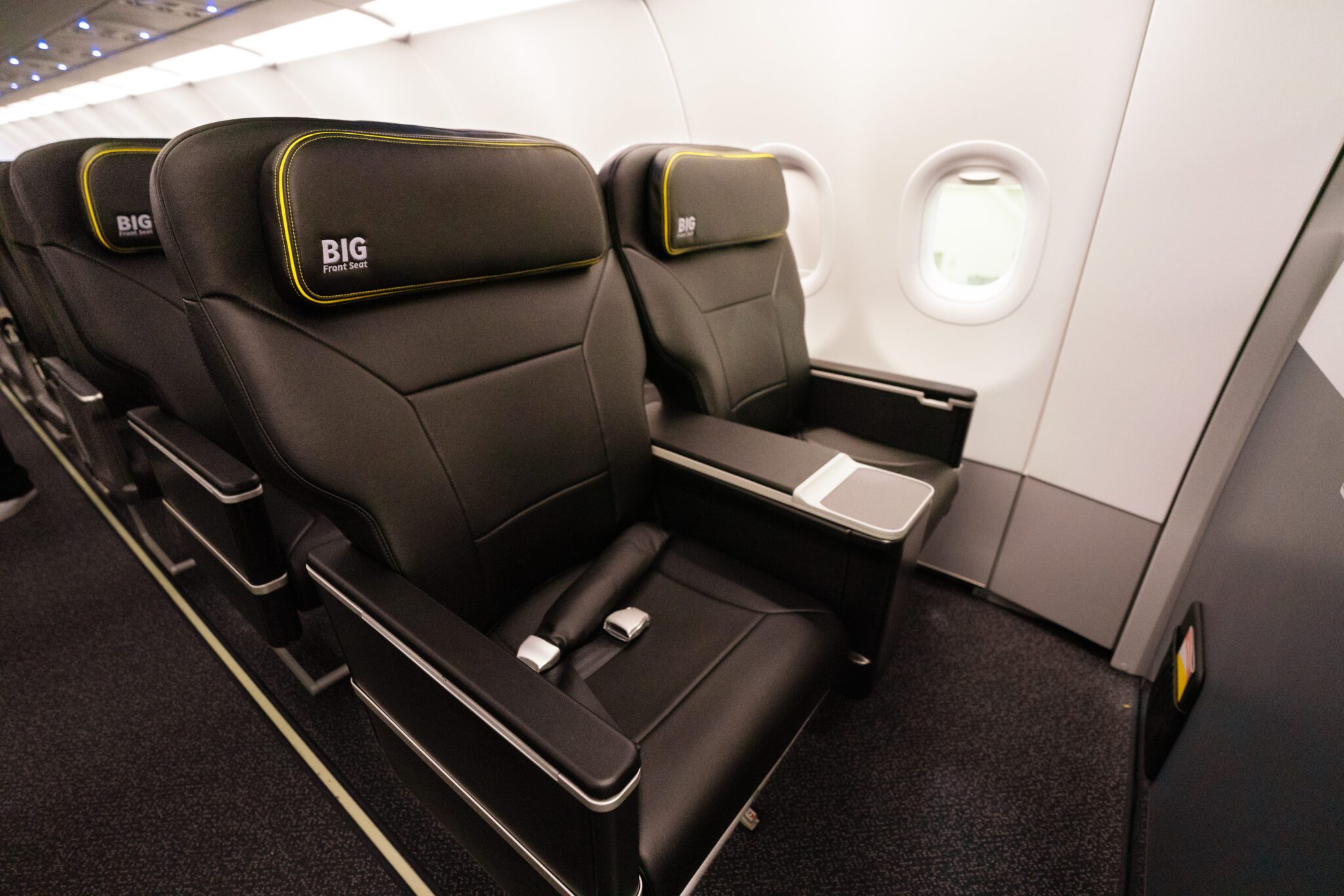
Business Travel
7 Ways AI Is Changing Business Travel
Someday a computer-generated avatar may explain why you can't fly business class to Dubai. In the meantime, travel management and travel tech companies are testing how to apply Gen AI to various parts of business travel.
Sean O'Neill | 2 weeks ago

American Airlines Profits Sink 46% as It Recovers From Direct Booking Blunder
American’s profits declined 46% in the second quarter as it reels from a controversial direct selling strategy and an imbalance in domestic seats.
Meghna Maharishi | 3 weeks ago

Southwest Sees Major Dip in Profits as It Vows to Make ‘Urgent’ Changes
Southwest’s profits decreased by 46% as it looks to make changes to its business model to boost its bottom line.
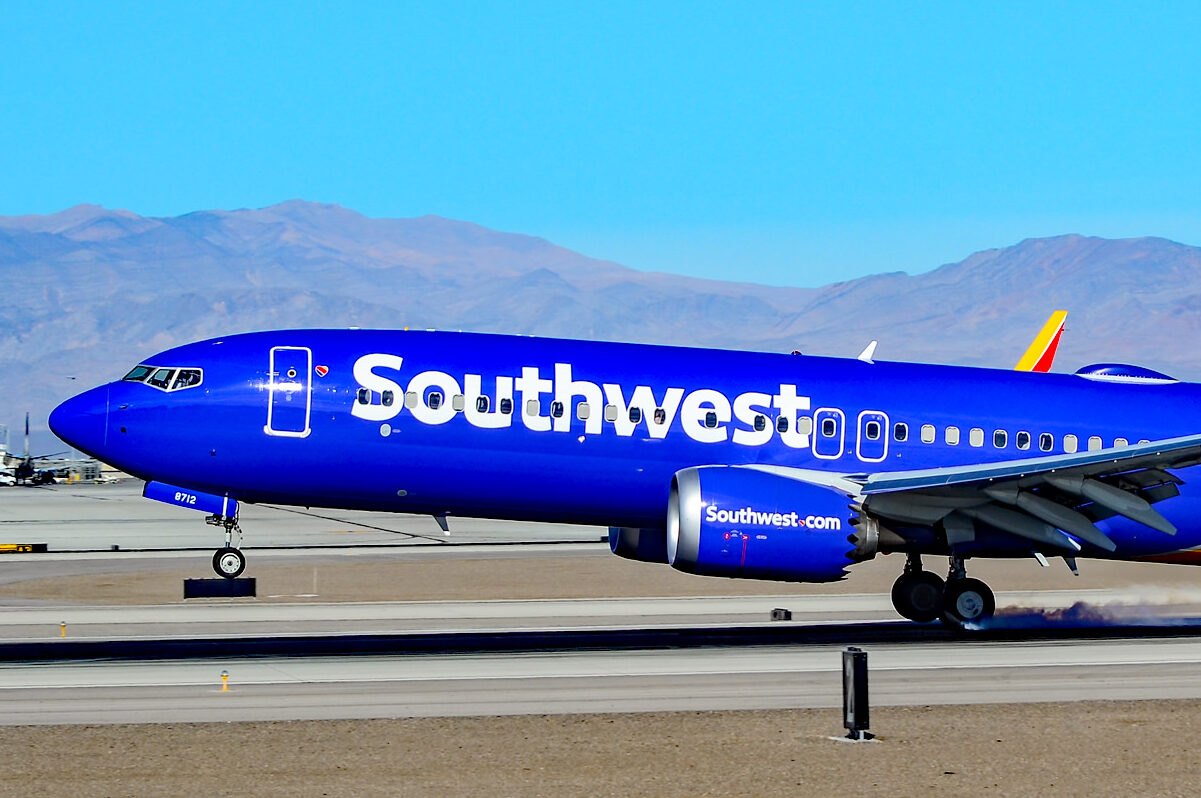
Southwest Rips Up its Business Model: Here’s What’s Changing
Southwest's leadership team will be hoping that these changes will be enough win back customers and fend off a vocal activist investor.
Gordon Smith | 3 weeks ago

SAP Concur Top Boss Touts New Business Travel Platform
SAP Concur, the behemoth of corporate travel and expense management, is flexing its muscles. Its new travel booking platform, now widely available in major markets, boasts a sleeker interface and richer content.
Sean O'Neill | 3 weeks ago

Why Doesn’t Turkish Airlines Have Premium Economy? We Ask the Chairman
Speaking to Skift, Turkish Airlines chairman Ahmet Bolat explains why he is comfortable defying the direction of travel at most other long-haul airlines.
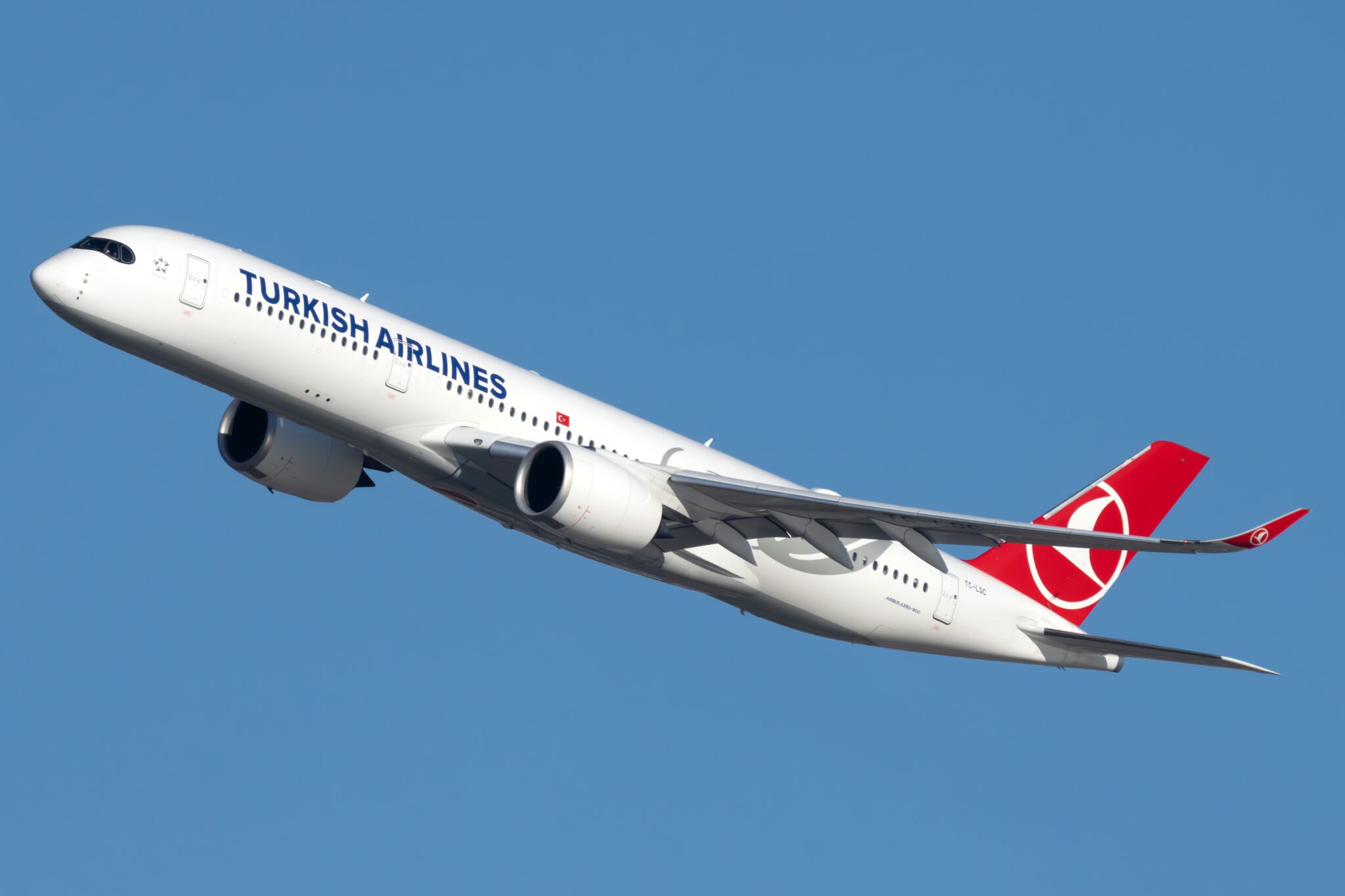
5 Fastest-Growing U.S. Business Travel Markets: Amex Hotel Data
Business travel is back, but Princeton, N.J., led U.S. markets in doing better than others, according to American Express.

Business Travel Bounces Back: Spending Forecast to Hit Record
Business travel is roaring back, with global spending projected to surpass pre-pandemic levels in dollar volume this year. Face-to-face wins.

- Sustainability
- Small Business
Reimagining business travel, without all the baggage

Since travel came to a screeching halt in March 2020, many have predicted that business travel might never recover, given the advances of video conferencing and the embrace of work from home policies.

But global business travel spending is expected to surpass 2019 levels this year, according to the Global Business Travel Association’s Business Travel Index released in August — that's two years sooner than GBTA was forecasting the previous year. A Mastercard survey of travel decision-makers , also released in August, found that nine out of 10 believe business travel is still critical for driving growth, and more than half expect to spend more than $1 billion on travel in 2025, up from 11% pre-pandemic.
That’s music to the ears of airlines and convention hotels, but technological advances, changing expectations and new pressures have also altered the business travel landscape in ways that may ease the journey for road warriors and frequent flyers – and the corporate teams who manage their travel. Here are five trends shaping business travel in 2024.
01 'Bleisure' is here to stay
Remote work is here to stay, and some companies have even instituted “work from anywhere” benefits, giving employees the opportunity to stretch out vacations abroad or visits to family. It also means corporate travelers can extend business trips by a few days, giving them a chance to explore more than just the convention hall or hotel amenities. The days of two-day international business trips may soon be in the rear-view mirror, as employees enjoy the perks of flexible office policies. But a distributed workforce can create new challenges when it comes to monitoring spending — a person working from home might have different expenses than a traditional office worker, like buying subscriptions, office furniture and computer equipment, which can make it more difficult for companies to predict and account for spending.
02 Business travel, consumer experience
For companies, combining business and travel is not always smooth sailing — managing expenses and reimbursements can get complicated. And for employees, the ease of paying with a tap or a click in their daily lives is missing from travel and entertainment payments, as anyone who labored over an expense report can attest. That’s why many companies are moving to virtual cards for travel expenses. These cards are created instantly for specific purposes — a business trip, a client dinner at a conference, travel arrangements for a promising recruit — with customized spend controls, such as the amount, time period and type of purchase where the cards can be used, producing detailed data for tracking, reporting and automated reconciliation. They can even be issued directly to mobile wallets, creating contactless travel experiences.
These heightened consumer expectations could also make companies expand the benefits on their commercial and corporate T&E cards — better travel insurance, concierge support, telemedicine offerings and access to airport lounges, for example.
03 AI at your service
Another extension of the “consumerization” of business travel? The AI tools taking hold in the leisure travel sector, including virtual travel agents that can customize itineraries and lock in low fares, are likely to make waves in corporate travel as well. These bots can tailor travel based on T&E policy, budget and employee preferences. And with the cost of business travel rising – CWT’s Global Business Travel Forecast for 2024 shows a 3% rise in average cost per attendee per day for meetings and events, and a 3.6% increase in hotel rates — corporate travel teams can use AI for better price predictions, more proactively managing their budgets. It can also help these teams build more dynamic policies and even adjust spending limits by analyzing past spend on a much more granular level. AI tools can simplify the arduous expense report process for both employees and finance teams by automating the capture and review of repetitive and predictable expenses. Nine in 10 travel decision-makers plan on investing in AI and machine learning to improve processes and personalize travel for their employees, according to the Mastercard survey.
04 Tracking the impact of travel
Many corporations are making concerted efforts to lower their carbon footprint. Nine in 10 travel decision-makers in Mastercard’s survey said they are more focused on tracking environmental, social and governance efforts — greenhouse gas emissions from company travel, for example. Carbon emissions tracking tools that show carbon footprint of business trips and seat selections can drive more environmentally conscious travel decisions. With sustainability at the top of corporate agendas, we can expect companies to seek out ways to help them achieve their sustainability goals. Mastercard’s T&E Consulting Services, for example, helps corporations re-evaluate their T&E policies and procedures, assess supplier performance and improve for the future.
05 The rise of the chief travel officer
At many organizations, the responsibility for corporate travel is split between human resources, finance, procurement, technology and even security teams. Even if they’re using the same tools and platforms, there’s often a disconnect when it comes to long-term strategy and decision-making. As business travel becomes more automated, larger companies may benefit from a chief travel officer — someone who can work across the organization to streamline processes, discover efficiencies and make the most of these emerging tools, enterprise solutions and corporate card benefits, including travel risk management services, concierge support and telemedicine offerings.
The resurgence of business travel illustrates the enduring value of in-person interactions — the building of relationships, the sparking of innovation, the deepening of trust that comes from sitting across the table or sharing a meal. Technology may have enabled the rise of virtual work, but technology is also making business travel smarter and more seamless than ever before.
This month, the Mastercard Newsroom is exploring how rapidly evolving technology, heightened consumer expectations and economic and societal pressures are changing how we live, work, shop and innovate.

In-car payments
Development finance
Data for good
Business travel
Authentication
Personalization

- Perspectives
- The future of business travel
- Investor Relations
Mastercard Sites
- Mastercard.com
- Mastercard Brand Center
- Mastercard Data & Services
- Priceless.com
Why Business Travel Still Matters in a Zoom World
Nonstop flights generally make traveling more pleasant—but can they lead to innovation, too, especially in the global context? Research suggests that they can, with important takeaways for managers reinstating business travel in a world emerging from the pandemic.
In a recent study , Harvard Business School Associate Professor Prithwiraj Choudhury examined how, when, and whether nonstop flights could spark an increase in new ideas. In a broad examination of flight and patent data, Choudhury and co-authors found that a 10 percent increase in nonstop flights between two locations led to a 1.4 percent increase in new patents between firms in those places.
“Even in a hybrid world, even in a world of work-from-anywhere, we still need to occasionally meet colleagues in person for social purposes.”
Choudhury and colleagues teased out an additional wrinkle. Meeting face-to-face—made easier with nonstop flights—matters most when collaborators are in different time zones or overcoming cultural distance.
“It seems that, if the two locations are in the same time zone and are culturally similar, then Zoom is good enough. It’s fine to meet colleagues on Zoom and have productive conversations with them. But, if you’re working with a colleague who lives in a faraway time zone or is culturally different from you, you have to get on a flight and meet that person in person. That’s a big takeaway,” Choudhury says.
In a business world emerging from Zoom boxes, that’s an important wrinkle to consider. “Business travel is still required,” says Choudhury, who wrote the study with Dany Bahar, an associate professor at Brown University; Do Yoon Kim, an assistant professor at Boston College; and Wesley Koo, an assistant professor at INSEAD. “Even in a hybrid world, even in a world of work-from-anywhere, we still need to occasionally meet colleagues in person for social purposes.”
Marrying flight and patent data
Choudhury and colleagues examined flights from every airport worldwide—5,015 in all—between 2005 and 2015. Then, they matched those flights to global patent data filed by firms whenever they knew the address of each patent’s inventor and used cutting-edge empirical methods to determine causality.
In addition to the 1.4 percent uptick in patents, the authors found that new applications cited other patents 3.4 percent more often—evidence of innovation as measured by the US Patent and Trademark Office—when nonstop flights increase by 10 percent. The firms that benefitted most from nonstop flights tended to be bigger innovators overall, with more inventor stock and higher R&D spending. Many of these companies were also located within 50 miles of innovation hubs or in countries that were known as tech leaders.
The researchers also found that the effect of nonstop flights on innovation outcomes was stronger for routes with shorter north-south distances, which cross over less longitudinal distance.
Some business travel makes more of a difference
Choudhury believes these findings offer meaningful insight for policymakers, particularly in innovation hubs, as they contemplate adding nonstop flights to their airports. It’s also useful for corporate leaders evaluating the importance of business travel.
Choudhury’s work is especially prescient in a post-pandemic world. His broader scholarship focuses on the geography of work, particularly how location affects productivity and innovation. The ongoing rise of remote work, propelled by COVID-19, calls into question the importance of face-to-face interaction. These days, he’s often asked whether in-person business trips are worth it.
“We’re showing that business travel matters for innovation, but it only matters if two firms’ locations are either culturally or temporally far away from each other.”
The study offers him an answer: Yes, with an important caveat.
“We’re showing that business travel matters for innovation, but it only matters if two firms’ locations are either culturally or temporally far away from each other,” he says—that is, if the two firms possess different cultural norms or don’t have overlapping business hours, defined as 1.5 hours or less.
For instance, colleagues who speak different languages and possess unique cultural norms around meeting styles would benefit from in-person meetings, whereas people who speak the same language and operate meetings similarly won’t realize the same benefit.
Choudhury hopes business leaders consider the research when refining post-pandemic work policies. Because of the vast sample size of flights used in this paper, he believes the findings are generalizable for all business leaders.
The power of Zoom
Choudhury was surprised that direct flights weren’t particularly helpful when people were in the same time zone, however.
“It just shows you the power of Zoom and similar communication technologies. The advent of these technologies has really shrunk distance,” he says.
Ultimately, Choudhury hopes that leaders realize that nonstop flights could overcome temporal barriers and help to spread knowledge—either through colleagues working in person or virtually, but on the same schedule—especially as work-from-home policies increase and the global workforce scatters.
“If you’re living in San Francisco, and your colleague is living in Vancouver, and you both speak excellent English, and you both understand exactly the same cultural norms, Zoom works great. If you’re meeting a colleague who lives in Beijing or South Korea, and you’re both culturally and temporally distant, those face-to-face meetings still have value,” Choudhury says.
You Might Also Like:
- Does Hybrid Work Actually Work? Insights from 30,000 Emails
- In a Work-from-Anywhere World, How Remote Will Workers Go?
- Research News and Tips: Innovating Across Time Zones
Feedback or ideas to share? Email the Working Knowledge team at [email protected] .
Image: iStockphoto/Nikada
- 25 Jun 2024
- Research & Ideas

Rapport: The Hidden Advantage That Women Managers Bring to Teams
- 11 Jun 2024
- In Practice
The Harvard Business School Faculty Summer Reader 2024
How transparency sped innovation in a $13 billion wireless sector.
- 24 Jan 2024
Why Boeing’s Problems with the 737 MAX Began More Than 25 Years Ago
- 27 Jun 2016
These Management Practices, Like Certain Technologies, Boost Company Performance
- Collaborative Innovation and Invention
- Innovation and Invention
- Research and Development
- Air Transportation
Sign up for our weekly newsletter
- Business Travel
- Personal Travel
- Meetings & Events
- Account Management
- Travel Counselor
- Travel Policy
- Supplier Negotiations
- Gamification
- Performance
- Online Adoption
- Implementation
- Travel Analytics
- Unused Tickets
- Contract Optimization
- Hotel Consulting
- Travel Sourcing
- Travel Alerts
- Locate & Communicate
- Medical & Evacuation
- Online Booking
- 24-Hour Support
- International Tools
- Communications
- Travel Portal
- Global Services
- Find Your Solution
- Case Studies
- Featured Insights
- Concur Login
- GetThere Login
- NuTravel Login
- Invoices On-Demand
- Direct Data
- Visa/Passport

Navigator Blog > The Top Business Travel Articles of 2021
The Top Business Travel Articles of 2021
For all its many stops and starts, 2021 brought with it rapid growth for corporate travel, continued resilience in the face of uncertainty, and robust planning for the future.
While COVID-19 and the emergence of new variants remained at the front and foremost of concerns for businesses, it shifted from the uncertain and reactive responses of the year prior to a strategic and progressive path forward for resuming travel. From resetting expectations with road warriors to tips for returning to the office safely , travel managers prioritized preparing their teams for the new norms ahead while making sure their travel programs were nimble and forward thinking.
As you reflect on the year and ready your business for 2022, review these key insights from our most popular articles of 2021:

International Borders Reopening to Travelers
When borders closed due to COVID-19 in March 2020, few could have predicted for just how long these closures would last. Companies from across the travel industry formed groups to advocate for the reopening of international borders, which finally came in June 2021 as countries across Europe reopened to vaccinated travelers . However, one of the most awaited border reopenings took more patience, with Canada welcoming back U.S. travelers in August and the U.S. following suit in November . Our articles monitoring which countries had reopened—and exploring the corresponding requirements for travelers—consistently ranked among our most widely viewed and shared, demonstrating both the demand for international travel and the importance of providing travelers with timely information.

Traveler Report: Flying Abroad with Delta and Air France
Although travelers were ready for international borders to reopen, they were still uncertain of what to expect. Would new testing and vaccine requirements be challenging to navigate? Would social distancing rules complicate the airport process? Direct Travel’s East Region President Sam DeFranco answered many of these questions for readers, providing an inside look at the new world of international travel on his trip to Paris with Delta and Air France . As part of his journey, Sam documented his experience in photos and shared insights about testing, face coverings, crowd sizes, and the response from locals. His behind-the-scenes account showed that, despite the changes, much of the world was ready to welcome travelers back for business.

What Vaccine Certificates and Health Passports Mean for Travel
One of the most important keys to travel resuming came in the form of increasingly available, highly effective vaccines. Due to the rapid speed at which they were developed and deployed, initial confusion and uncertainty was expected. For travelers, new requirements restricting travel (largely international) to vaccinated individuals meant navigating the language and expectations of health passports and vaccine certificates . Early on in the conversation, we outlined exactly what vaccinated travelers should expect and the ways in which immunization records might be displayed before traveling. The topic demonstrated the need for travelers to stay informed and have access to reliable and trustworthy sources of information.

5 Trends to Watch as Corporate Travel Takes Off
Just as travelers had to adjust to the changes reshaping corporate travel, travel managers found themselves scrambling to adapt their programs and business goals to meet the moment. Our article tackling the latest trends in the booming marketplace explored the topics shaping (and still shaping today) the business travel climate . Issues like sustainability and greener travel programs have joined more traditional topics like trip approval and improved mobile offerings to create a new list of priorities for the future. Review these trends as you go into 2022 and evaluate the areas you may need to revisit and revamp.

Signs of the Travel Rebound Now In Progress
A recurrent theme of 2021 was the search for reassurance and resilience in the face of uncertainty. Although, significant progress has been made since 2020, the surges and subsequent plateaus in both COVID-19 cases and business recovery have made it easy to lose sight of the considerable growth accomplished. Direct Travel has provided progress reports on travel recovery throughout this past year, including our article breaking down the positive indicators of the current travel rebound . Signs like increased vaccination rates, higher travel volumes, and the easing of travel restriction all point to a new road ahead.
While the business world traditionally evaluates performance in terms of sales cycles and fiscal years, the results of 2021 show that the COVID-19 pandemic and travel’s corresponding recovery must be evaluated on a strategic, long-term scale. Undoubtedly, 2022 promises more growth ahead, with a bright New Year offering opportunities to celebrate the progress made and continue building for the future. Reminder if you haven’t already, to subscribe to Direct Travel’s Corporate Travel Newsletter to stay connected to the latest business travel news.
Subscribe to the Navigator Blog:
Copyright 2023 by Direct Travel | Privacy Statement | Terms Of Use | GDPR Privacy Notice
Travel companies rein in their forecasts as US consumers cut spending
- Medium Text

- Lower-income earners delay vacations as savings dwindle, economic outlook uncertain
- Hilton, Marriott see minimal leisure travel growth; international revenue offsets U.S. demand
- Airbnb and Booking Holdings report slowing U.S. growth, last-minute bookings increase
Sign up here.
Reporting by Doyinsola Oladipo in New York; Additional reporting by Aiswarya Jain in Bengaluru; Editing by Matthew Lewis
Our Standards: The Thomson Reuters Trust Principles. , opens new tab

BHP, Rio Tinto, Qantas to invest $53 mln in Australian carbon credit fund
BHP , Rio Tinto and Qantas will invest a total of A$80 million ($52.7 million) as early-stage investors in an Australian carbon credits fund that aims to invest in land reforestation projects, according to statements from the fund and the companies on Monday.

I've been to 17 countries and swear by checking a bag when I travel. It's a little luxury that's worth the price every single time.
- After visiting 17 countries, I've learned checking a bag makes my travel experience more enjoyable.
- Forgoing a carry-on and checking a bag means I don't have to compete for overhead bin space.
- When traveling with a large checked bag, I get to pack everything I want to bring on my trip.

I consider myself fairly frugal when it comes to travel. I've booked the 6 a.m. flight to save $50 and have flown basic economy more times than I'd care to admit.
But after visiting 17 countries, there's one little luxury I can't go without when flying: checking a bag. Yes, the average airfare for a US roundtrip flight alone is upward of $360, and checking a bag both ways can be expensive — usually about $50 to $70 both ways. However, I believe a more comfortable travel experience is worth the splurge.
Checking a bag makes my time in the airport less stressful and more enjoyable, which helps set the tone for my trips. Here's why I'll always swear by it.
Checking my bag and forgoing a carry-on makes moving around the airport easier
I hate maneuvering a carry-on around bathroom stalls or pulling my bag behind me while holding my lunch. I find that my carry-on bag is practically tied to me while I'm in the airport, which can become annoying.
To avoid this, I forgo a carry-on and pack everything in my checked bag. Once I turn my bag in to an agent, I don't have any cumbersome luggage to bring to the gate. This allows me to move around the airport much more easily.
Boarding a plane without a carry-on is less stressful
Checking a bag means I can avoid the Hunger Games-type madness that comes when it's time to board the plane.
Related stories
Most passengers with a carry-on try to board as quickly as possible before the space in the airplane's overhead bin runs out. Avoiding this anxiety-inducing exercise and not rushing to board is a little luxury worth the price of checking a bag.
Opting for a large checked bag means I can pack everything I want to bring on my trip
When I traveled with a carry-on, there were times when I ran out of space. I often felt like the abominable snowman, wearing multiple layers and a jacket, which wasn't a nice experience.
Now, packing all my belongings in a large checked bag gives me more choices for what I can bring on my trip. As someone who's a bit indecisive and dislikes the concept of packing light , I feel great having this space to pack several clothing options.
After all, the clothes I'm in the mood to wear when packing may differ from those I want when it's time to get dressed.
In my experience, a large checked bag doesn't make transportation from the airport more difficult
I used to think that having a carry-on would be the most advantageous when I landed — this type of luggage is usually smaller than a checked bag, so I figured taking it on a train or other form of transit would be easy. But in reality, I find that the size of my bag usually doesn't matter if I'm just going from the airport to a hotel.
If I were backpacking across Europe , sure, I'd take as little baggage as possible. But in my opinion, cramming things into a smaller bag doesn't make sense when the effort to get from point A to point B is the same either way.
Traveling can be expensive and anxiety-inducing. But if you ask me, checking a bag is a relatively easy way to have a better travel experience.
Watch: Thousands of bags pile up at US airports after flight cancellations
- Main content
We've detected unusual activity from your computer network
To continue, please click the box below to let us know you're not a robot.
Why did this happen?
Please make sure your browser supports JavaScript and cookies and that you are not blocking them from loading. For more information you can review our Terms of Service and Cookie Policy .
For inquiries related to this message please contact our support team and provide the reference ID below.
- Share full article
Advertisement
Supported by
How to Avoid Rental Car Toll Fees
Using the rental company’s transponder can rack up hefty charges, but there are workarounds, from apps to paying by mail.

By Derek M. Norman
Paying tolls when you’re driving a rental car is largely unavoidable, but you can avoid paying hefty fees just to activate the device that allows you to pay tolls.
In July, the Central Florida Expressway Authority, which is based in Orlando, began issuing free temporary toll passes to travelers who rent cars at Orlando International Airport . Travelers can download an app, register using a credit card and get a toll pass which comes in the form of a QR code that can be hung from a rearview mirror. These temporary toll passes allow travelers to avoid being charged extra fees to use a rental car company’s toll transponder, a small electronic device that attaches to the car’s windshield.
This program, the Expressway Authority said, is the first of its kind in the U.S. and in the future could be a model for other destinations. Until then, there are other tips and tricks that can keep you from getting stuck with an inflated car rental bill from toll-related surcharges.
See if there is an app for your area of travel
No single toll-pay app covers roads across the country. And some apps can only be used for personal cars, rather than rentals. But there are several that cover sections of the United States and let you pay tolls from your phone.
GoToll lets you pay for tolls on roads in California, Georgia, Illinois, Maryland, North Carolina and Virginia. Another toll-paying app, Ecotoll , covers much of California, Texas and the Northeast.
Bring your own toll pass (but don’t open the rental car’s transponder)
Before bringing your own transponder along, check which brand provides service where you are traveling. If you’re using an E-ZPass — which is accepted in about 17 states across the Midwest and East Coast — you don’t need to update any information about your rental car to your personal E-ZPass account . But some other brands may require you to register your rental car with your account within a certain time frame.
Just put the transponder on your dashboard and let it pay the tolls. But make sure not to activate the transponder that’s already provided in your rental car. This will start charging you a daily usage fee. And if you do so while you’re also using your own E-ZPass, you’ll be charged twice.
Buy a toll pass for your travel region
Check online to see which system is in use at your destination, and then pick up the right toll transponder online or at a participating retailer like a rest stop or grocery store. Costco, Wegman’s and Walmart all sell transponders.
Once you’ve made your purchase, you will have to go online and create an account or call to register your device. And finally, attach it to your car. (But remember, don’t touch the rental car’s transponder.)
Utilize a toll by mail program
The state of New York offers a Tolls by Mail program that allows you to be sent a bill for your toll charges. This service can be used for rental cars through its “Pay Toll Now” feature: Users create a short-term account using their license plate and can pay using their credit card for up to 30 days. (By doing so, you can avoid any toll surcharges that your rental company may tack on.) While this program is specific to New York, some other states, like Florida and Texas, have similar programs, but they may not offer the option for rental cars.
Check first with the toll authority of the state in which you are traveling.
Know the roads
Depending on where you plan on traveling, you might be able to avoid toll roads altogether. Your trip may be longer, but it also may be more scenic. Many map and traffic apps, like Google Maps or Waze , also have an option to avoid toll roads, which will prompt the app to only suggest routes without tolls.
For more travel advice, visit our collection of Travel 101 tips and hacks.
Derek M. Norman is a senior news assistant for the International section of The Times. More about Derek M. Norman
Open Up Your World
Considering a trip, or just some armchair traveling here are some ideas..
52 Places: Why do we travel? For food, culture, adventure, natural beauty? Our 2024 list has all those elements, and more .
Salzburg, Austria: The compact Austrian city of medieval alleys, majestic Alpine views and just 150,000 residents bursts to life in the summer .
Southern Sardinia: This overlooked island region of Italy, with its idyllic beaches and buzzing capital , is ready to share its essence.
Adirondacks : New York’s Adirondack Park draws more than 12 million visitors each year. Here’s where to go to avoid the crowds .
Los Angeles: The California city has one of the most diverse urban forests in the world and each neighborhood has its own characteristic plantings .
Nighttime Activities : Travel adventures, from goat hikes to snorkeling , get even better when they’re done under the stars.

IMAGES
COMMENTS
It seems that, finally, the light at the end of the pandemic tunnel is in sight—at least in some parts of the world. In 2020, total global business travel expenses contracted by 52 percent, while managed corporate-travel spending in the United States plummeted 71 percent, or $94 billion. Last year, when we reported on the impact of COVID-19 ...
A Wall Street Journal analysis last year, for example, estimated that intra-company meetings and training represented 20 percent of all business travel and predicted that 40 to 60 percent of that ...
Corporate travel spending is tracking toward full recovery to 2019 levels by 2024 or 2025, but higher costs and climate concerns will keep trip volumes smaller than pre-pandemic levels in "real terms," according to a Deloitte study weighing responses from 334 corporate travel managers.
Business Travel News is the leading source of information serving the managed business travel and meetings market. BTN provides business travel management professionals in multinational, large, midsize and small corporations with news, analysis, and research to help them better evaluate, select and purchase business travel and meetings for their companies. www.businesstravelnews.com
In future articles, we will take a deeper look at the timeline and shape of the recovery curve for corporate travel. Business travel is critical—and volatile In 2018, business-travel spending exceeded $1.4 trillion—21.4 percent of the global travel and hospitality sector. 1 Global economic impact & trends 2020 , World Travel & Tourism ...
In fact, according to travel management company TripActions, business travel bookings for the first three months of 2022 alone surpassed more than half of all bookings for 2021, with an 875% ...
Find articles on travel buyer tactics, negotiation strategies, and supplier relations to optimize travel programs. Stay updated on booking channels, global distribution systems (GDS), and direct ...
Learn more about the trends shaping the future of corporate travel and meetings, and sustainability. For a more comprehensive look at the 2024 outlook for air travel, hotels, and meetings and events, consider our Air Monitor, Hotel Monitor, and Global Meetings and Events Forecast to help set your company up for success in the year ahead.
According to Morning Consult data, the percentage of frequent business travelers who say they'll never return to the road has ticked up from 39% in October 2021 to 42% in February 2022. At a New ...
An August 2023 report from the Global Business Travel Association showed that the worldwide business-travel industry is expected to surpass its pre-pandemic spending level of $1.4tn (£1.1tn) in ...
Anita Salvatore, new CEO of CTM North America, notches win for women in travelSalvatore's ascension means five of the 10 largest U.S. travel agencies will have women in the role of either CEO or ...
Nov. 27, 2022. Business travel came back this year more strongly than most industry analysts had predicted in the depths of the pandemic, with domestic travel rebounding by this fall to about two ...
The renewed hope contrasts sharply with the mood two years ago, after most business trips were abruptly canceled or suspended. The U.S. Travel Association, a trade group, said that in 2020 ...
Here are five trends shaping business travel in 2024. 01. 'Bleisure' is here to stay. Remote work is here to stay, and some companies have even instituted "work from anywhere" benefits, giving employees the opportunity to stretch out vacations abroad or visits to family. It also means corporate travelers can extend business trips by a few ...
by Direct Travel on 12/18/2023. Business travel continues to rebound in the post-pandemic era, and a majority of industry members believe that global travel is mostly or fully recovered. With that optimism came a "resetting" mindset within the travel industry this year. Organizations took a step back to analyze their travel programs, and in ...
The Top Business Travel Articles of 2022. by Direct Travel on 12/14/2022. After two years of uncertainty, 2022 brought new life and a reimagined path forward for corporate travel. Companies re-evaluated the vital importance of in-person meetings, while the emerging hybrid workforce ushered in new opportunities for expanded business trips (aka ...
Meeting face-to-face—made easier with nonstop flights—matters most when collaborators are in different time zones or overcoming cultural distance. "It seems that, if the two locations are in the same time zone and are culturally similar, then Zoom is good enough. It's fine to meet colleagues on Zoom and have productive conversations ...
The Top Business Travel Articles of 2021. by Direct Travel on 12/21/2021. For all its many stops and starts, 2021 brought with it rapid growth for corporate travel, continued resilience in the face of uncertainty, and robust planning for the future. While COVID-19 and the emergence of new variants remained at the front and foremost of concerns ...
A study from Oxford Economics found that $12.50 of additional revenue is generated for every $1 spent on business travel. A second study, from Harvard's Growth Lab, also underlined the vital ...
NEW YORK, Aug 8 (Reuters) - Travel companies including Airbnb (ABNB.O), opens new tab and Marriott International (MAR.O), opens new tab are forecasting a slowdown in leisure travel as U.S ...
I consider myself fairly frugal when it comes to travel. I've booked the 6 a.m. flight to save $50 and have flown basic economy more times than I'd care to admit.. But after visiting 17 countries ...
Flyr, a travel startup that provides software to companies including JetBlue Airways Corp., has raised $295 million in equity and debt in a new funding round. The deal, led by WestCap, values the ...
Thousands of anti-racism protesters have rallied in cities and towns across England after a week of anti-immigrant rioting and disorder. Gatherings in locations where anti-immigration protests had ...
For more travel advice, visit our collection of Travel 101 tips and hacks. Derek M. Norman is a senior news assistant for the International section of The Times. More about Derek M. Norman